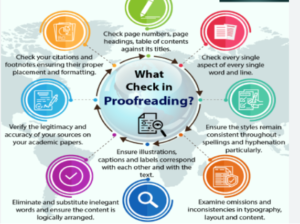For instance, you plan to undertake research on “The impact of climate change on biodiversity and ecosystem services in tropical rainforests”. Even if you are an expert in this field, it is likely that there may be grammatical mistakes or punctuation errors in your writing along with a variety of technical errors. To ensure the book is easy to read and grammatically correct, you may choose to hire a writing expert to assist you with the writing process. This process is known as scientific proofreading, and in this blog, we will explore the essential techniques used in scientific proofreading for PhD dissertations. But before delving into that, let us first gain an understanding of what scientific proofreading entails.
Describing scientific proofreading
Scientific proofreading is the process of reviewing and correcting written scientific content for grammar, punctuation, and style errors, as well as ensuring that the content is accurate and clear. This process is often performed by a professional proofreader who has a background in the field of science and an understanding of the technical language and conventions used in scientific writing. The goal of scientific proofreading is to improve the overall quality and readability of the scientific content and to ensure that it is free of errors that could detract from the credibility of the research or findings being presented.

Figure 1: Features of scientific proofreading
(Source: https://academy.pubrica.com/research-writing/importance-of-proofreading-for-scientific-writing-methods-and-significance/)
Identifying the essential techniques for scientific proofreading of PhD dissertation
There are 8 techniques or ways which are used to identify scientific proofreading of PhD dissertation. The ways are described below:
Use proofreading software: using software such as Grammarly, Hemingway, and ProWritingAid can help identify errors that might be missed during manual proofreading.